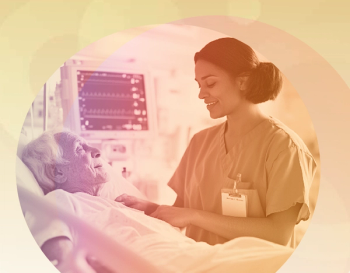
- May 2015
- Volume 2
- Issue 2
Households Are Long-Term Reservoirs for MRSA Strain
American researchers suggest that households can serve as long-term reservoirs for USA300, a virulent and easily transmissible strain of methicillin-resistant Staphylococus aureus (MRSA) and the predominant community-associated MRSA clone in the United States.
American researchers suggest that households can serve as long-term reservoirs for USA300, a virulent and easily transmissible strain of methicillin-resistant Staphylococus aureus (MRSA) and the predominant community-associated MRSA clone in the United States. The study, published recently in mBio—an open-access, online publication of the American Society for Microbiology—found that the bacteria can linger for years within a home, spread between members of the household, and evolve genetically to become unique to that household.
The study investigators performed whole-genome sequencing on 146 USA300 MRSA isolates from skin and soft tissue infections and colonization cultures gathered from a previous study conducted from 2008 to 2010 in 21 Chicago and Los Angeles households that included an index case with a skin and soft tissue infection found to be caused by USA300 MRSA upon presentation to an emergency room.
The previous study, published in Clinical Infectious Diseases in 2012, included visits to the homes of 350 skin infection patients. The noses, throats, and groins of the patients and 812 household members were cultured for bacterial colonization. Among all 1,162 people, S. aureus was colonized at one or more body sites of 40% of patients and 50% of household contacts.
In the current study, unique single nucleotide polymorphisms (SNPs) were identified and whole-genome phylogeny was analyzed to characterize isolates in order to understand transmission dynamics, genetic relatedness, and microevolution of USA300 MRSA within the 146 studied households. The genetic information from these MRSA samples was compared with previously published genome sequences for 35 USA300 MRSA isolates from San Diego and 277 from New York City.
Little genetic variation was found within the USA300 MRSA household isolates from Los Angeles (average of 17.6 SNPs) or from Chicago (average of 12.0 SNPs). These isolates tended to cluster into closely related monophyletic groups, which suggests the introduction of a single common USA300 ancestral strain into a household and the transmission within each household of that single strain.
Using Bayesian evolutionary reconstruction, the research team inferred that USA300 MRSA persisted within households from 2.3 years to 8.3 years prior to sample collection. They also found that fluoroquinolone-resistant USA300 clones emerged around 1995 and were more widespread in Los Angeles and New York City than Chicago.
“We found that USA300 MRSA strains within households were more similar to each other than those from different households,” said senior author Michael Z. David, MD, PhD, assistant professor of medicine, University of Chicago. He added that, although MRSA is rarely introduced into households once it gets in, “it can hang out there for years, ping-ponging around from person to person. Our findings strongly suggest that unique USA300 MRSA isolates are transmitted within households that contain an individual with a skin infection.”
Co-author Timothy D. Read, PhD, associate professor of infectious disease, Emory University School of Medicine, noted that “the study adds to the knowledge base of how USA300 MRSA has spread throughout the country. We’re also getting hints at how it evolves inside households. Decolonization of household members may be a critical component of prevention programs to control USA300 MRSA spread in the United States.”
The researchers concluded that their study findings suggest that household MRSA eradication programs may result in an effective method of MRSA control.
Articles in this issue
over 10 years ago
Noroviruses Can Spread Through the Airover 10 years ago
Researchers Are Working on a Promising Novel Herpes Vaccineover 10 years ago
Ebola Present in Eyes Even After Blood Test Clears PatientNewsletter
Stay ahead of emerging infectious disease threats with expert insights and breaking research. Subscribe now to get updates delivered straight to your inbox.



















































































































































































































































































